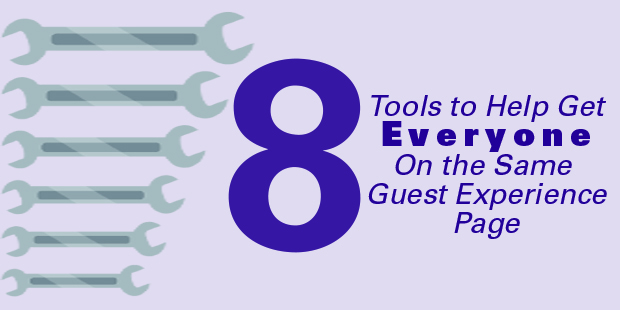
8 Tools to Help Get Everyone on the Same Guest Experience Page
– a note from the Vision Room Curator: During August we are focusing on Guest Experience in churches, but some of the most powerful learning for churches can occur by reading about customer service – all you have to do is substitute the word “Guest” every time you see “customer.” The following content was graciously supplied by Annette Franz, a customer experience expert. Enjoy!
How do we ensure that everyone in the organization is on the same page when it comes to customer experience?
My latest post has me thinking about a quote I stumbled upon the other day from Edmund Wilson:
No two persons ever read the same book.
Wow! Isn’t that the truth.
Think about books you’ve read; think about books you’ve discussed, either back in school or with friends or colleagues. I’m pretty sure you all came away with different lessons, interpretations, and favorite characters. You probably loved it, while someone else hated it. You might have been bored with it after two chapters, while others totally related to it. Never mind books… think about conversations you’ve had. Were they all interpreted the same way by every party involved?
How does this apply to customer experience?
It got me thinking about customer-centricity and getting the organization focused on the customer. How do we get everyone on the same page? How do we ensure that everyone is reading the same book?
A few tools you can use within your organization include:
Employee CX Assessment: I wrote about this last month. Use it to find out what employees know about the customer and the customer experience? Then use the results to better frame our training efforts and to provide other (the right) tools needed to ensure employees have a clear line of sight to customers and are equipped to deliver the experience we need (and customers want) them to deliver.
CX Vision: Your customer experience vision will be inspirational and aspirational; it will outline what you see as the future state of the customer experience. It will briefly describe the experience you plan to deliver. And it will serve as a guide to help choose future courses of action. It should align with your corporate vision.
Corporate Vision: An inspirational and aspirational statement, your vision not only outlines what the company is trying to achieve near-term and long-term but also guides decision-making processes and your subsequent, resultant course of action. Presumably, your vision will (a) draw the line between what you’re doing and for whom you’re doing it and (b) create alignment within the organization.
Brand Promise: A brand promise is the expectation you set with your customers; it’s a promise you make to your customers. Everything you and your employees do should reflect this promise. Consistently. It’s a combination of the brand purpose and the reality of what the brand can deliver. In most cases, defines the benefits a customer can expect to receive when experiencing your brand at every touch point.
Core Values: Your core values are guiding principles for your employees; they outline which behaviors and actions are right and which are wrong, both for your employees and toward your customers. Everything you do must be aligned with your values, and they should be integrated into everything you do.
Purpose: It’s your reason for being, your Why. Customers buy from brands with which they align; similarly, employees want to work for companies with which they are aligned. Make sure everyone in the organization understands your Why.
Journey Maps: A journey map is the ultimate tool to help everyone understand the customer and his experience, to walk in his shoes. Journey maps also connect employees to how they contribute to – and impact – the customer experience.
Personas: Personas help put the experience in the customer’s perspective and make you think about the customer as a “real human.” They help everyone understand the customer and keep people from forming their own opinions about who the customer really is.
What other tools have you used to get everyone on the same page when it comes to customer experience?
If you feel like you’re not on the same page as me, maybe it’s time to change the story. – Unknown
Want to know more about Guest Experiences in your church? Start a conversation with our team. We’re glad to offer our input. Your vision is at stake, so let’s talk.

Tags: Annette Franz, CX Journey, Church Guest Experience, Church Guest Services, Guest Experience, Guest Services, Journey Maps, Personas












